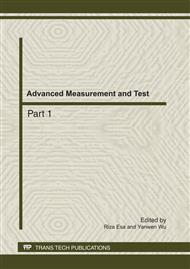p.1384
p.1389
p.1395
p.1401
p.1406
p.1411
p.1417
p.1422
p.1428
Energy-Efficient of Non-Invasive Motor for On-Line Monitoring System Based on Reasoning Model
Abstract:
This paper mainly introduces the development process of energy-efficient of non-invasive motor for on-line monitoring system based on reasoning model. In addition, the function , composition and commissioning of shis system is introduced. In this system, in order to collect and analyze status recording of the motor running, operating parameters of motor speed, torque and power factor, efficiency are estimated on-line by using motor stator current signal feature analysis technology. In the paper, air-gap torque method is used to non-invasive electromotor for efficiency computation. The designing process of software for On-line monitoring system is shown as: Firstly, monitor motor’s operating parameters on-line, then, motor energy management is supported by the analysis of monitoring recording. At the same time, construct communication network for motor monitoring by using wireless communication technology about efficiency curve of industry motor. This system has the advantages of monitoring precision, easy installation, low costs, especially suitable for monitoring and energy management of efficiency for small and medium-sized motor, and it has been used widely in industrial production.
Info:
Periodical:
Pages:
1406-1410
Citation:
Online since:
July 2011
Authors:
Price:
Сopyright:
© 2011 Trans Tech Publications Ltd. All Rights Reserved
Share:
Citation:


